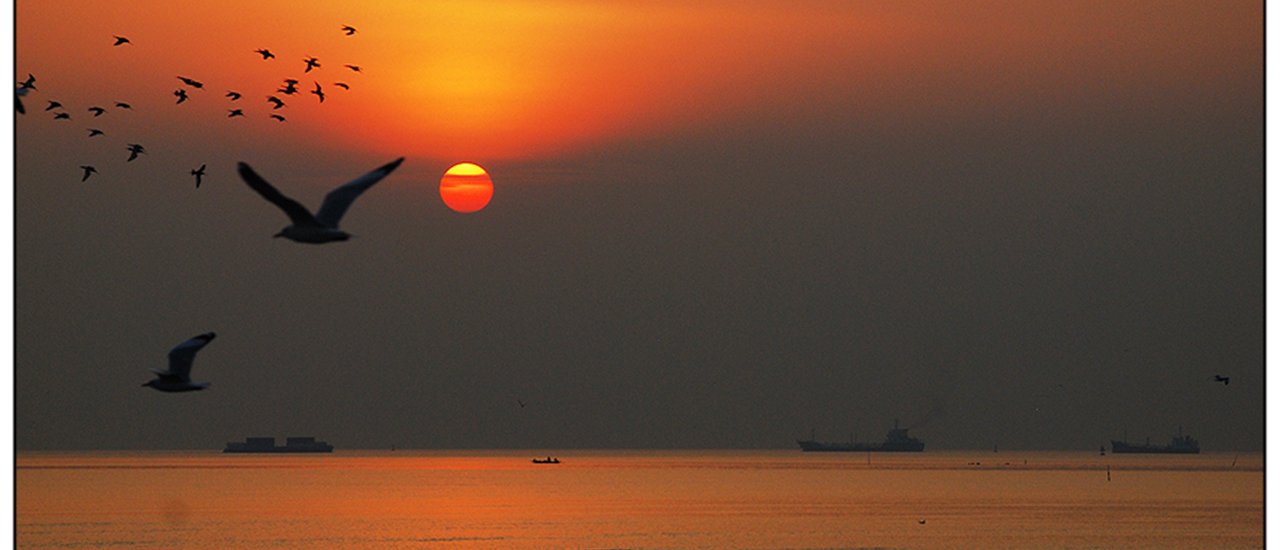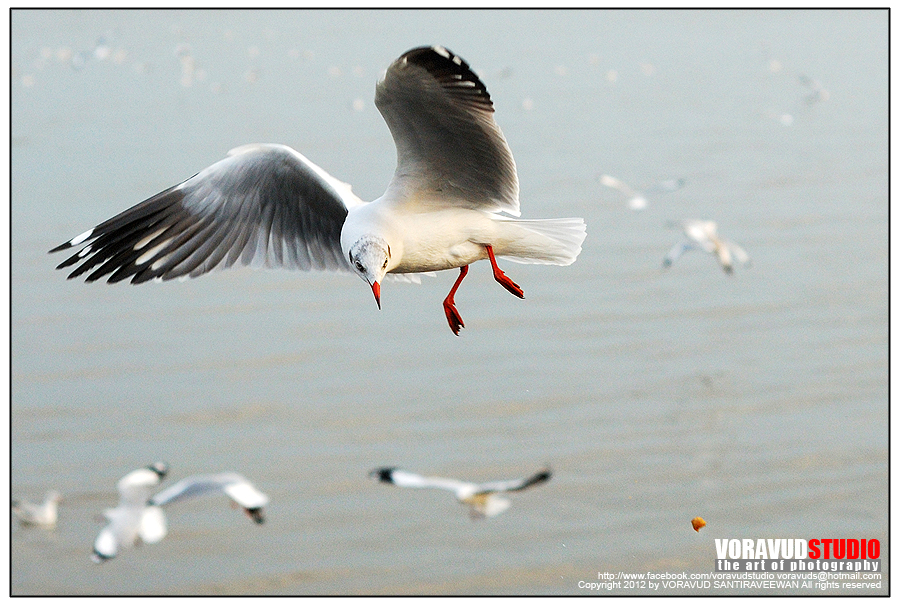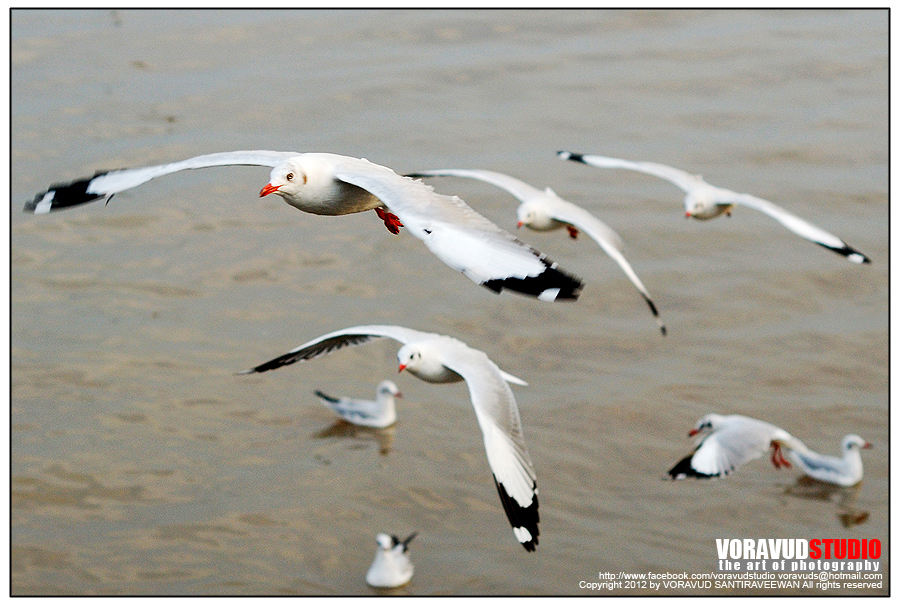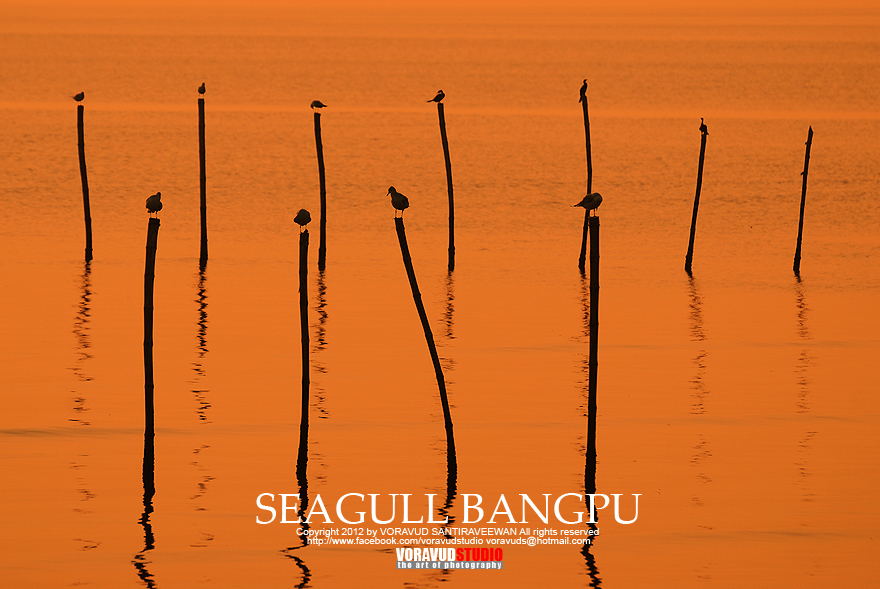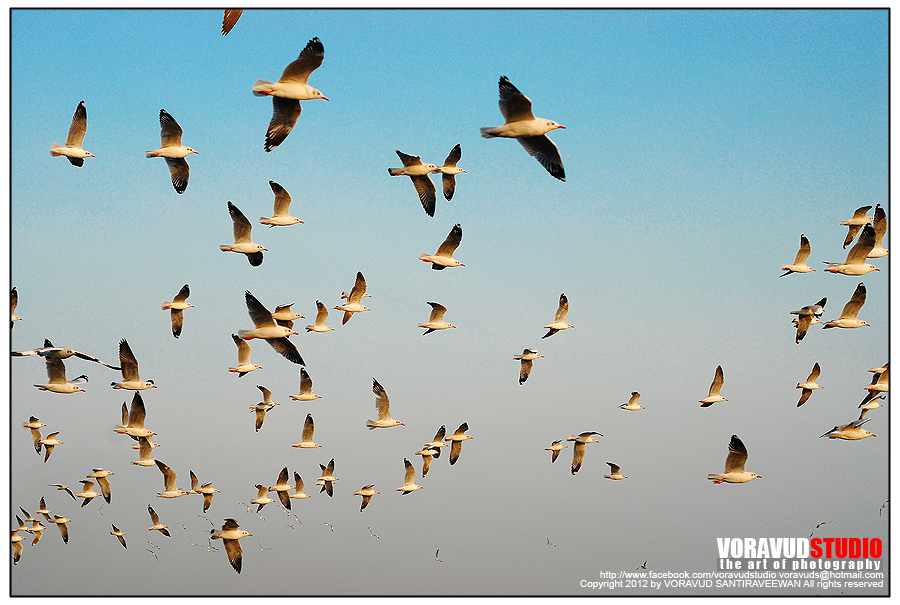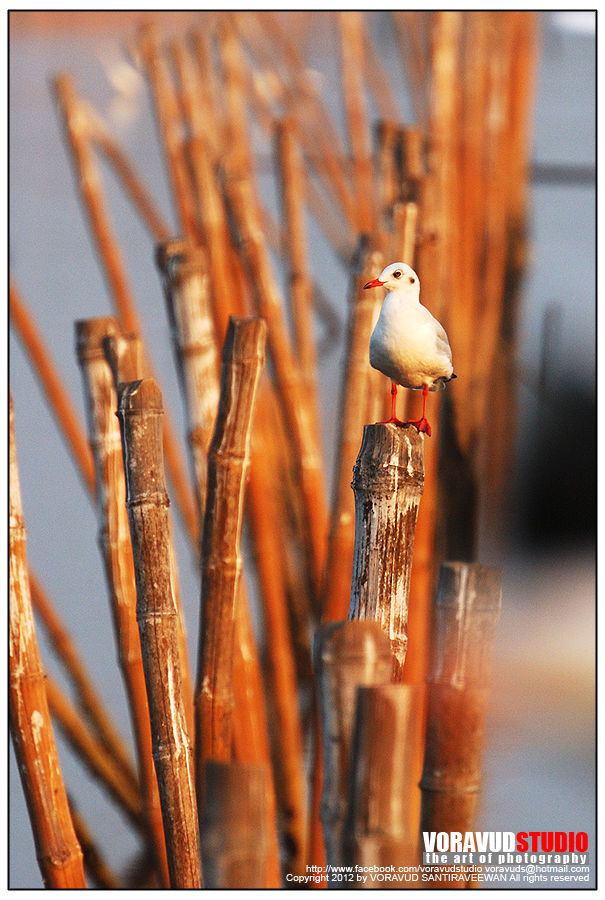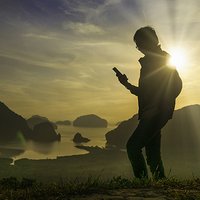These photos are from 2 times of shooting. The 1st set of photos was taken in 2009 and the 2nd ones in late 2012. It's been already 3 years, so the mood may change a little bit. Let's go to see these seagulls though my lens.

Gull or Seagulls are seabirds (Charadriiformes) of the family Laridae.
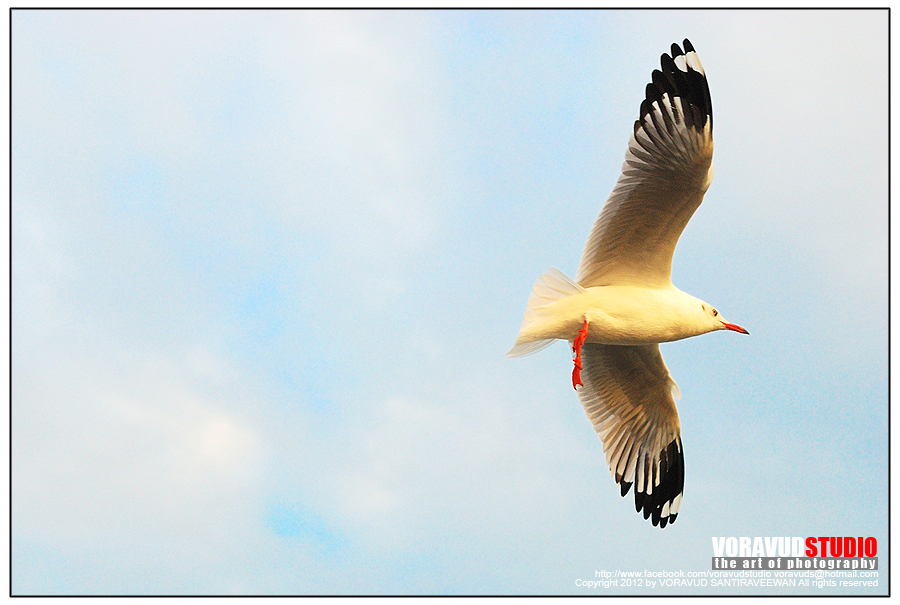

They have different sizes from medium to large. Generally, they have grey or white feather, some of them have black spots on the head or wings. The mouth is long and thick, the feet are membrane.
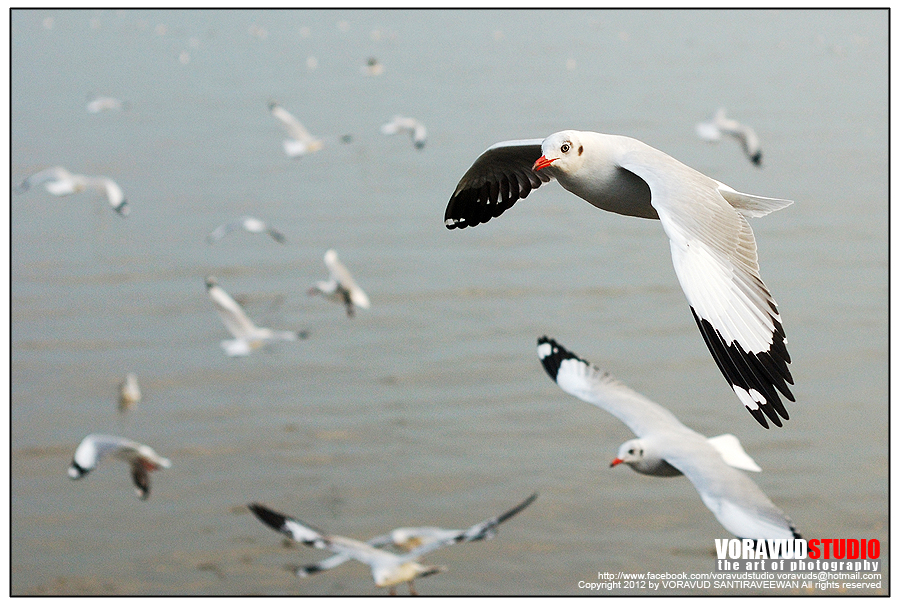

They like to live in group and hunt for food by the coast, but some kinds of them live in fresh water. Fishermen or sea navigators believe that they are a symbol of a good sign because if they see the seagulls that mean they are near the shore.
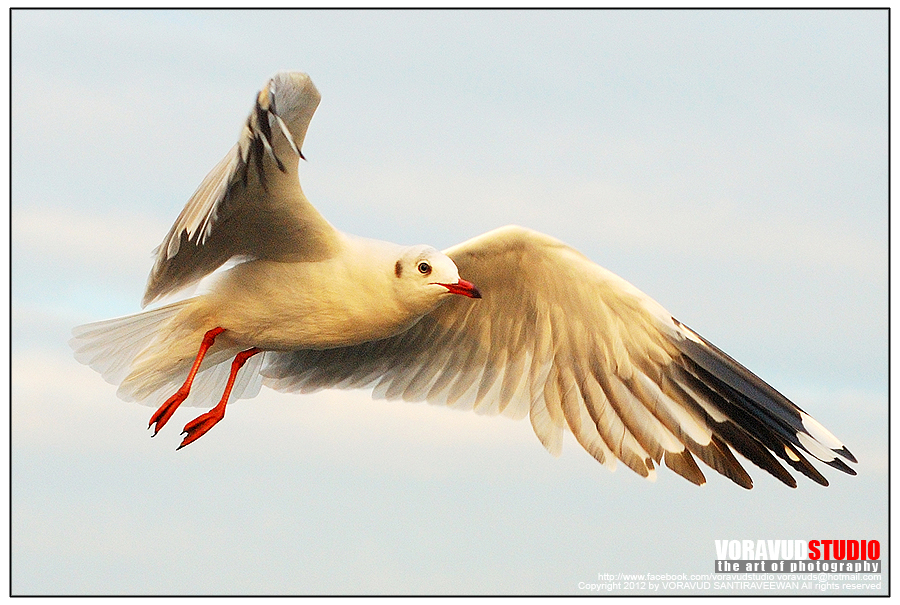

There are 55 types of gulls or seagulls in 11 species and 9 types can be found in Thailand. All have to immigrant from the north continent to get away from the freezing weather. They can fly about appx.170-190 km./hr. as a group. Seagulls normally hatch about 24 days and the young will learn and can fly like their parents in 3 months.
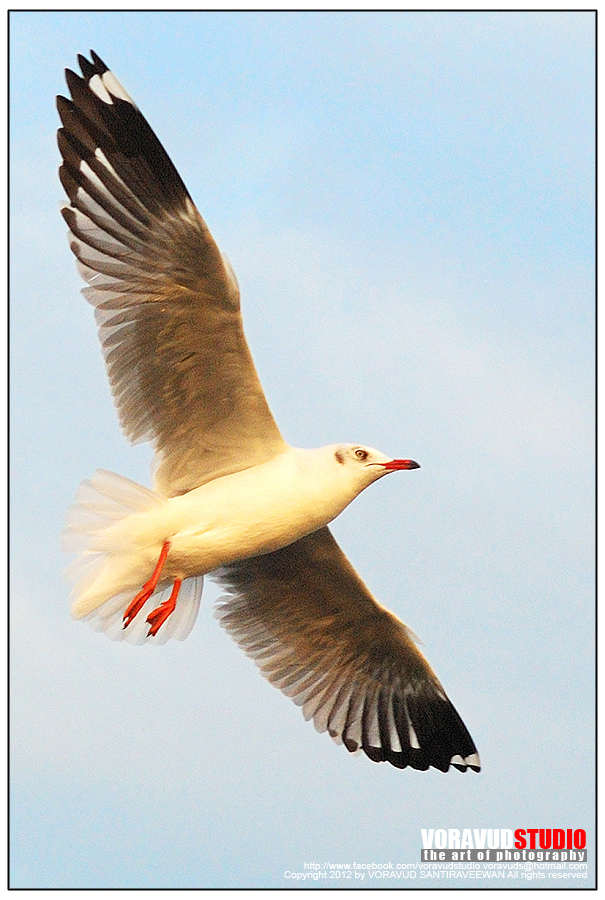
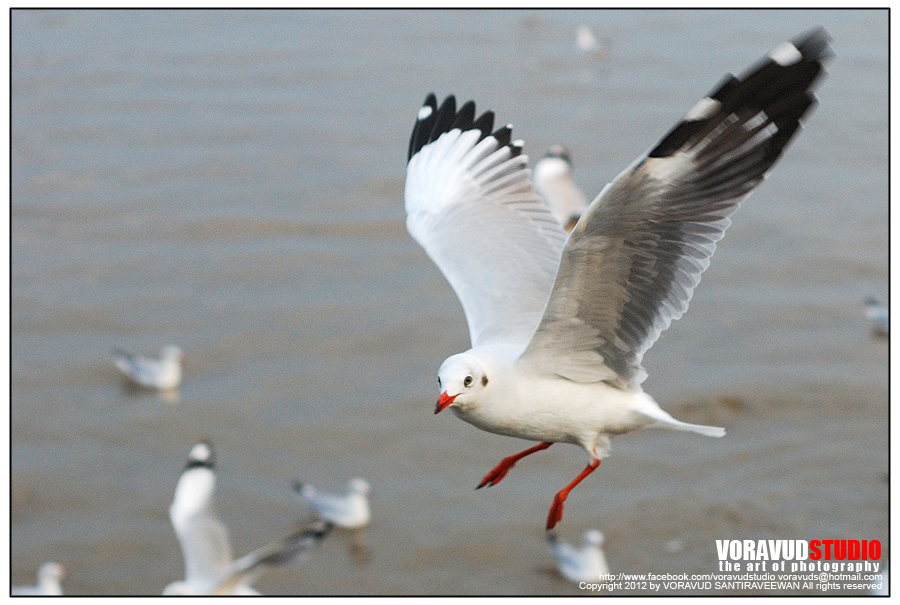
The best location to find these gulls in Thailand is Bang Pu in Samut Pakan Province. They come here every year and at least around 5,000 gulls each year.
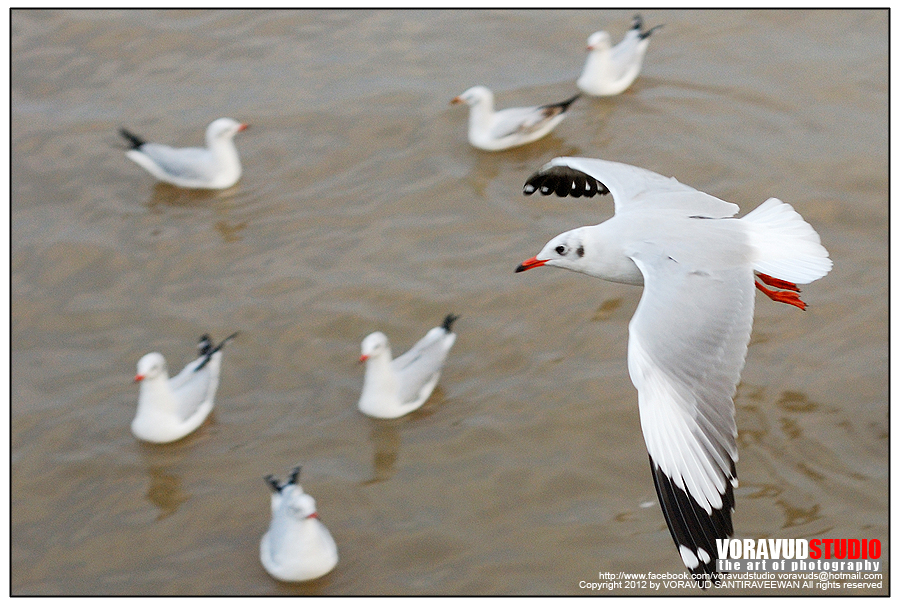
There 2 types of seagulls in Thailand, one is the large size, they like to float on the sea after a long day of flying.

Another is little tern which can be found in Thai coast about 15 types. They don't like to float on the water and more on the poles.
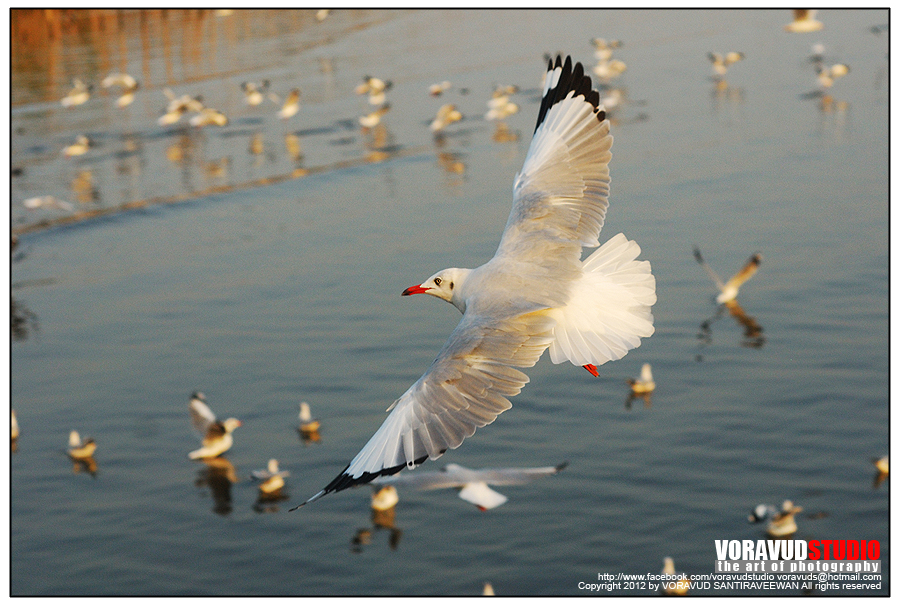
These gulls that at Bang Pu are the same ones that hatch on the coasts in Tibet and Mongolia in the summer (it's rainy season in TH). When the young has grown up enough, they go around to Indian ocean and back to Thai ocean.

They normally come here in November. When they first arrive, their heads are white with little brown color near the ears.

Then, in February the color will change to dark brown or black as to find a partner. After selecting a right partner, they fly back to hatch in Tiber and Mongolia in April or late May. They nest on the ground and there are 2-3 eggs each nest. They watch and protect the eggs until the young comes to the world.
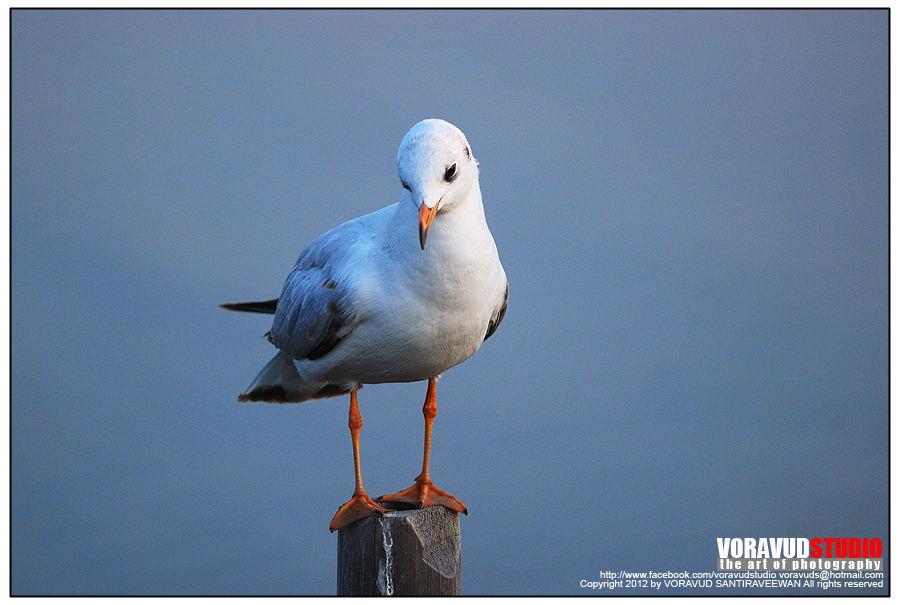
The young that ages under 1 year, they have black color on the tails and wings, light browns on the back.
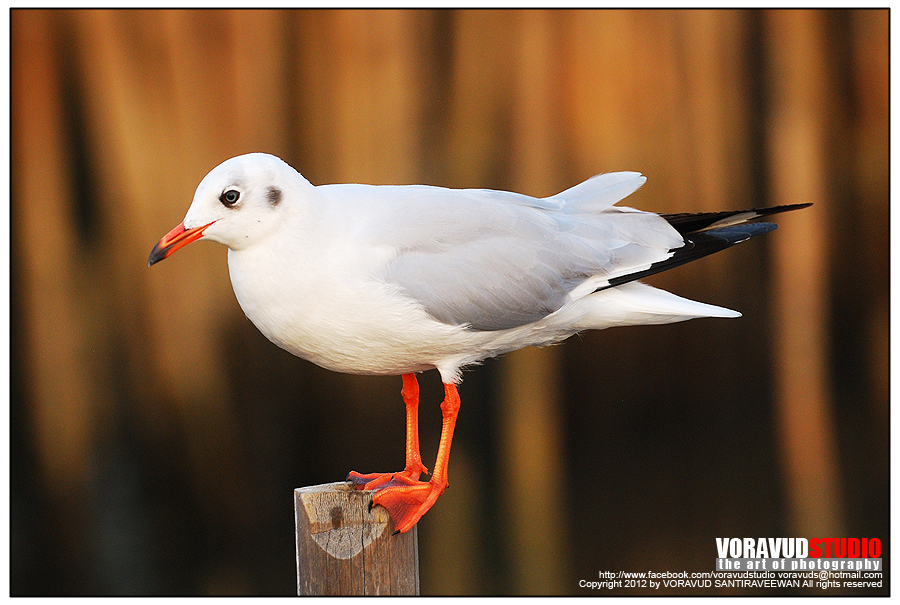
When they age about 2 years their wings will have white spots and the black color at the tails disappeared. They look more beautiful with clean white color.
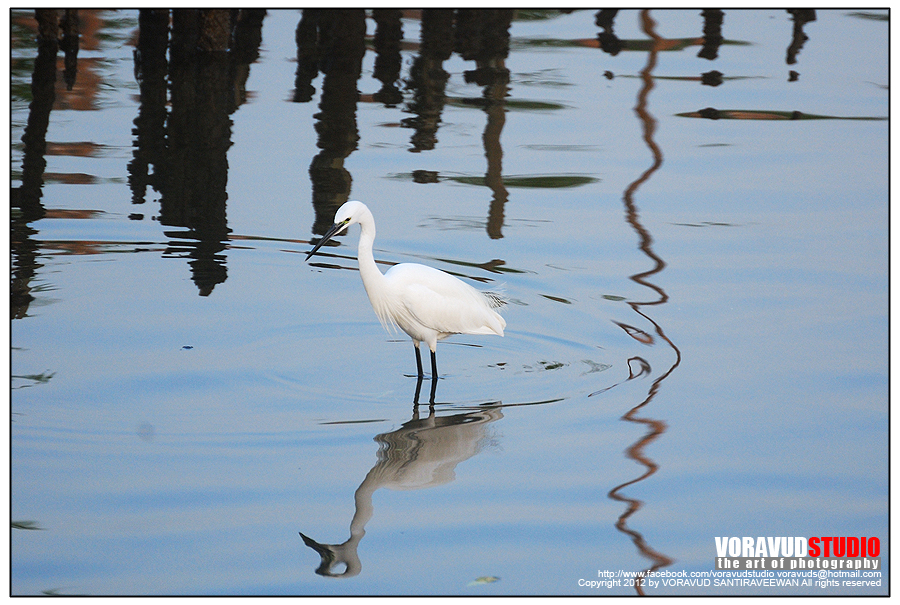
They like to eat the left over food floating on the water. So, they actually help to make the sea clean and more beautiful. These gulls make an interesting life and make people come to visit Bang Pu. When they come we know the raining season has gone and say hello to a winter time. This is why we are joyful to see them come each year.
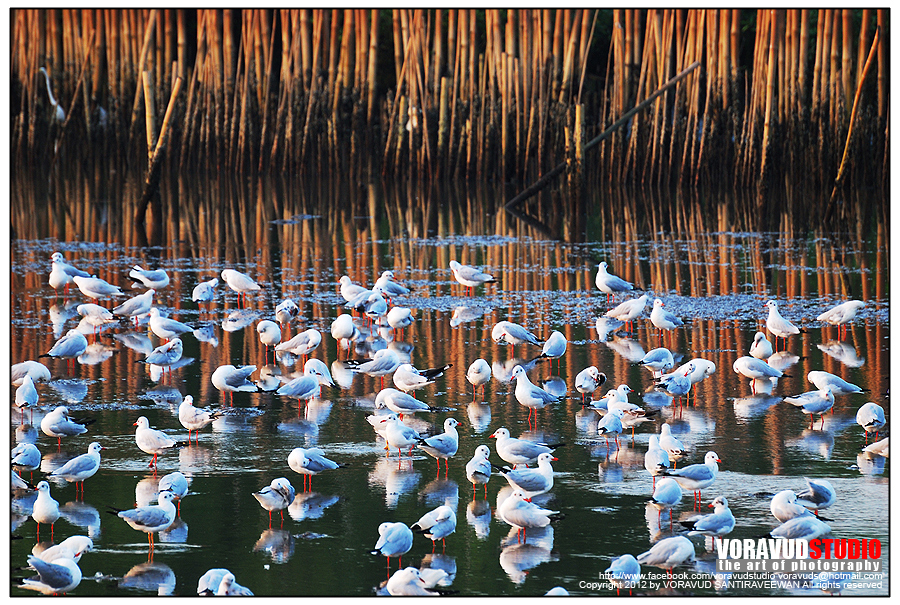
Let talk about Bang Pu Recreational Retreat, here is quite popular and was found by Field Marshal Plaek Pibulsongkram, a prime minister in 2480 Thai year ( or 1937 ). It was purposed to be a place for vacations because it's not far from Bangkok.
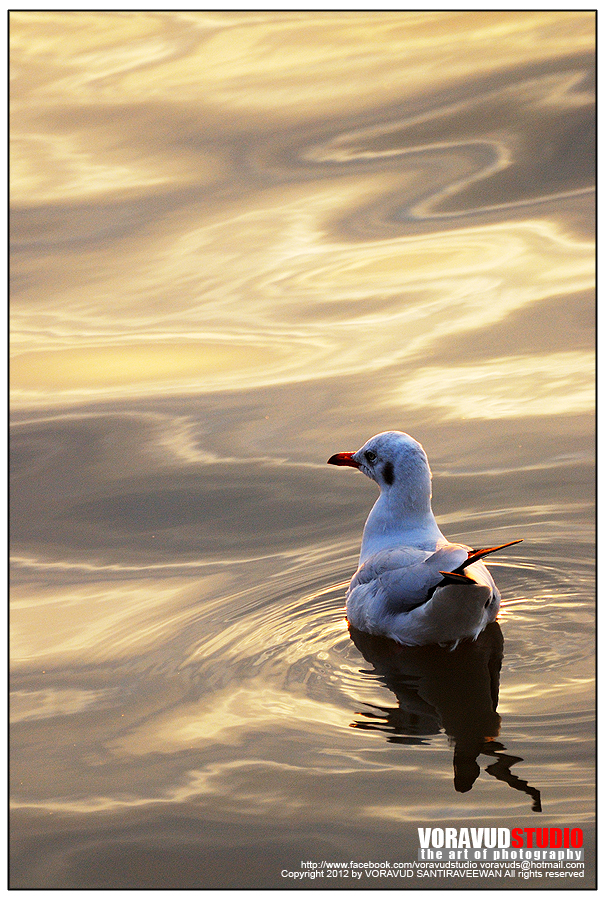
In 1939, Bang Pu Recreational Retreat was open its door to the public by under the care and protection of Field Marshal Plaek Pibulsongkram.
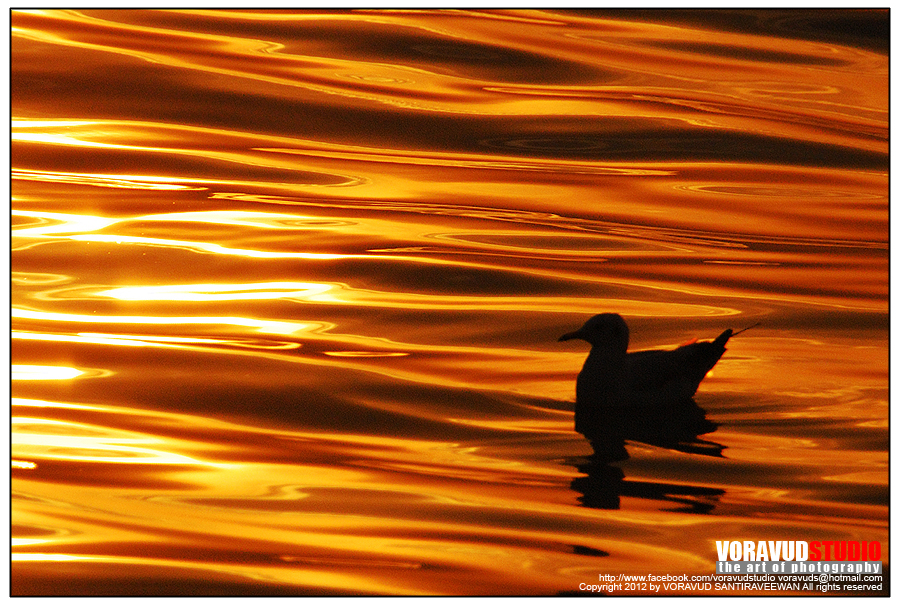
Then, in 1941 it was shut down due to the war between Japanese army and the other countries nearby.
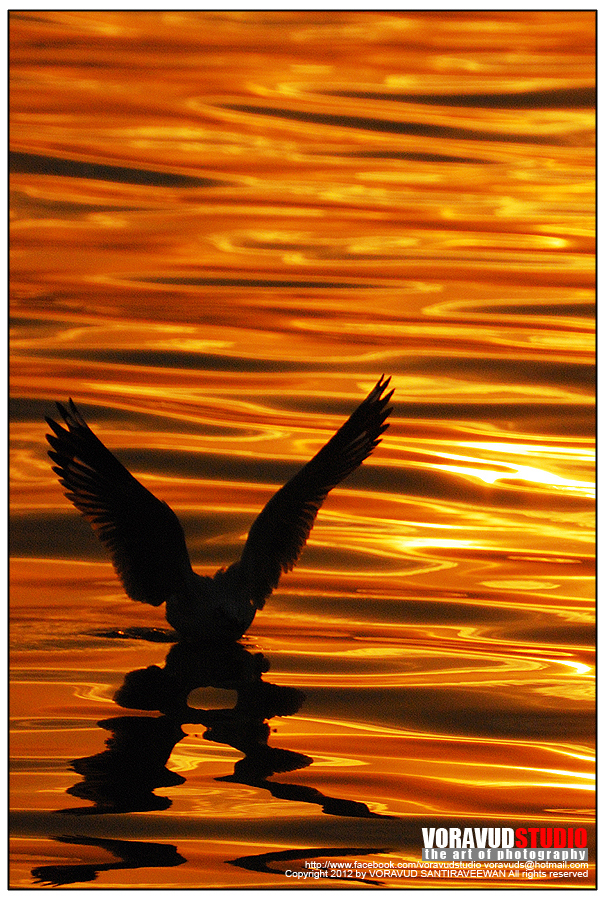
And then opened again after the war stopped.
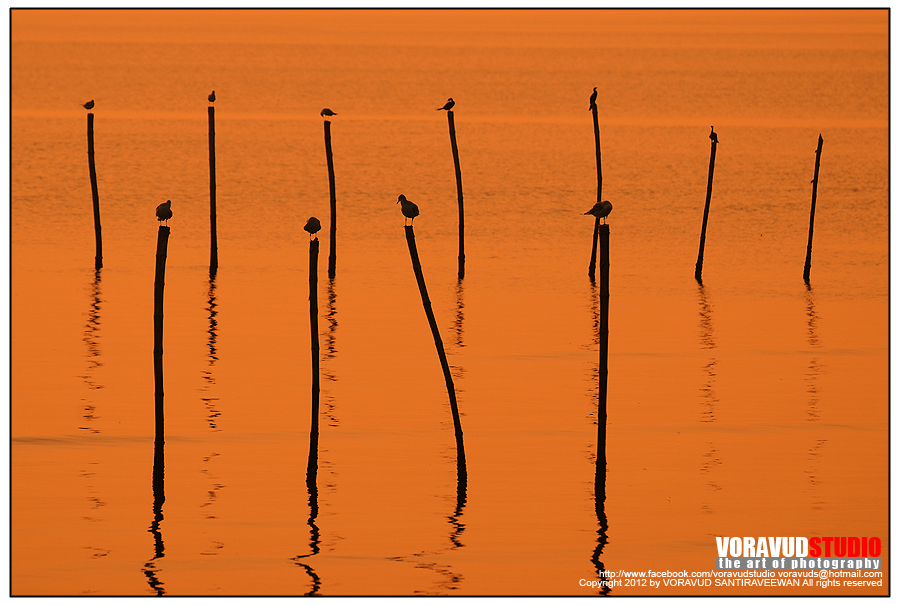
Later in 1948, it was assigned to be sanitarium for wounded soldiers to recovery and receive a treatment. Also, there were many roadside shops pop-up around the area.
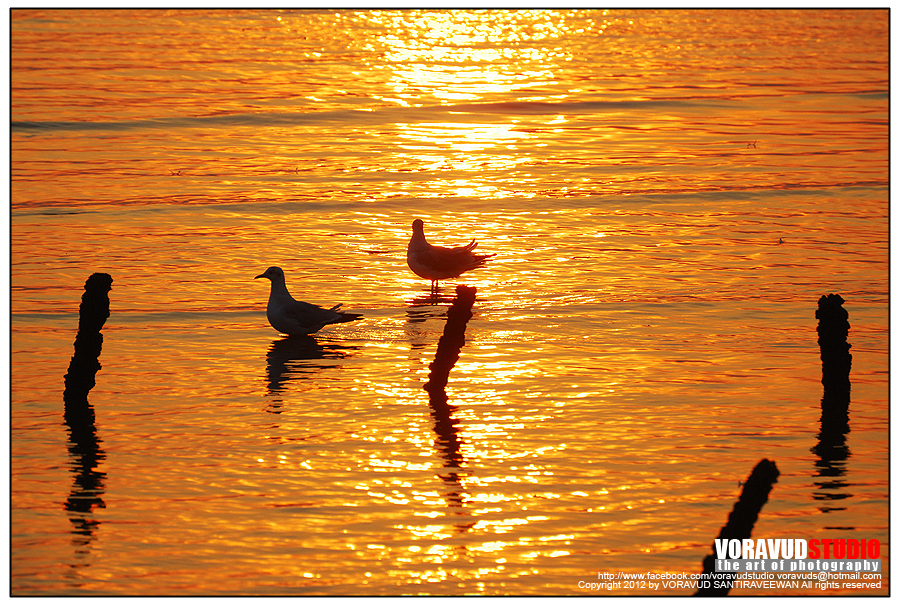
Then, in 1993 due to the damage of building which is not safe for visitors, many restaurants were shut down the services.
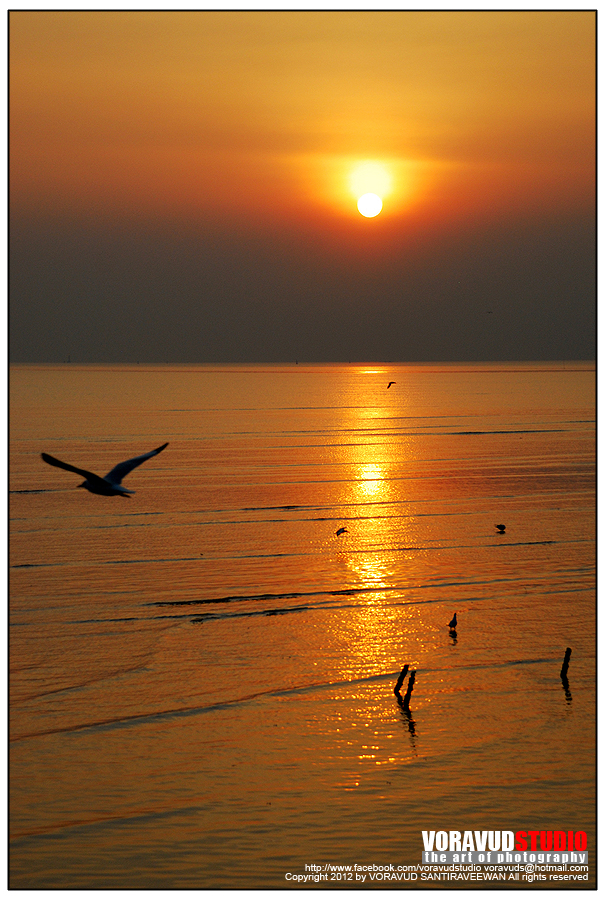
Later in 1999, there was a change in civilization and less conflict between borders, so the sanitarium was shut down. However, the Recreational Retreat Center still remains til nowadays.
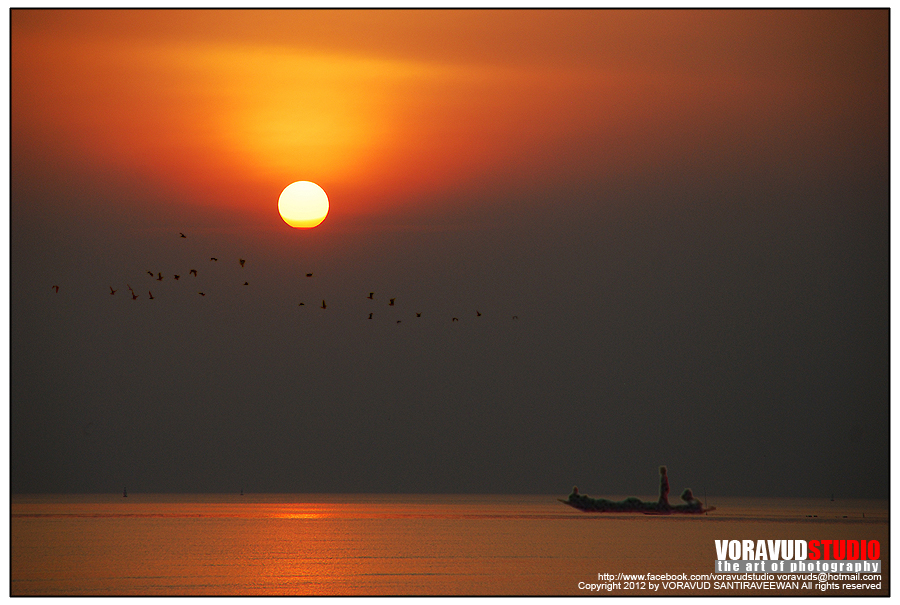
A year later, a big maintenance was done for the whole area and changed the name to "Sala Suk Jai"
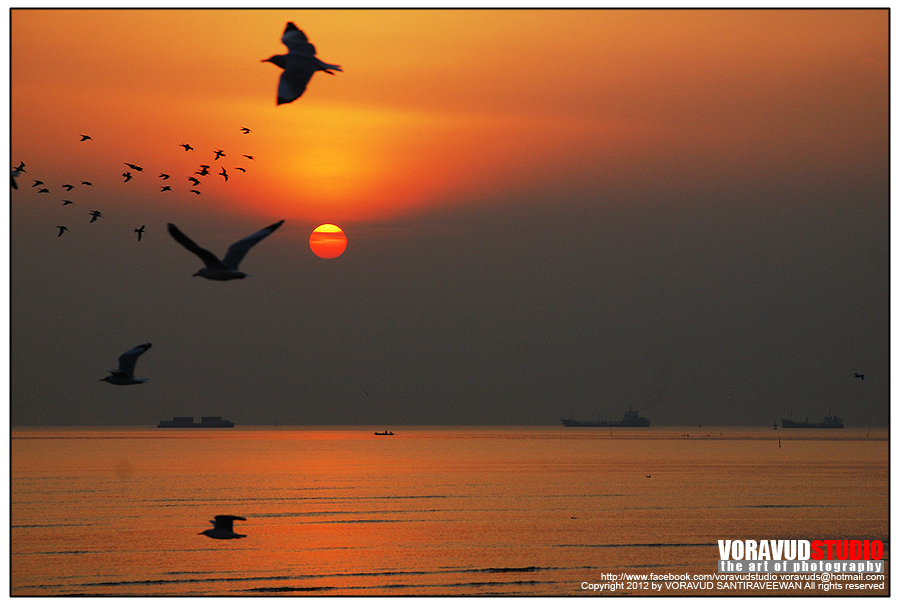
So, Bang Pu Recreational Retreat Center is a good place to visit and not that far from Bangkok. A good timing to go is in late afternoon until sunset, so you can enjoy a great view of sunset with flying seagulls.
Find more about my works:
http://www.facebook.com/voravuds
http://www.facebook.com/voravudstudio
Voravud Santiraveewan
Saturday, April 18, 2015 11:30 PM

